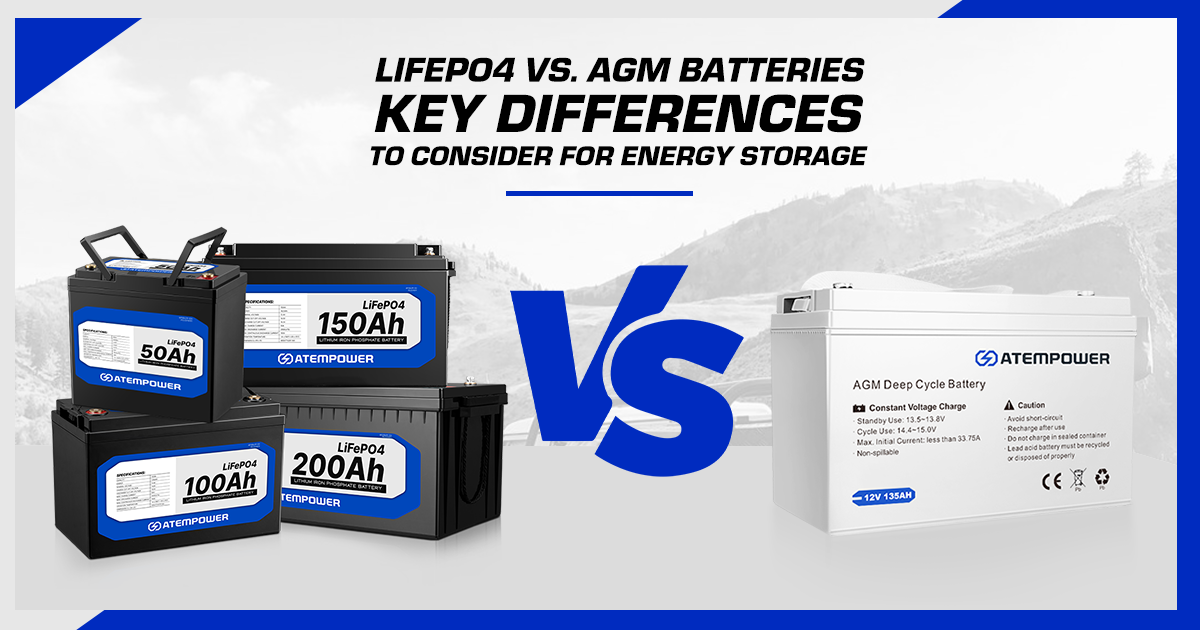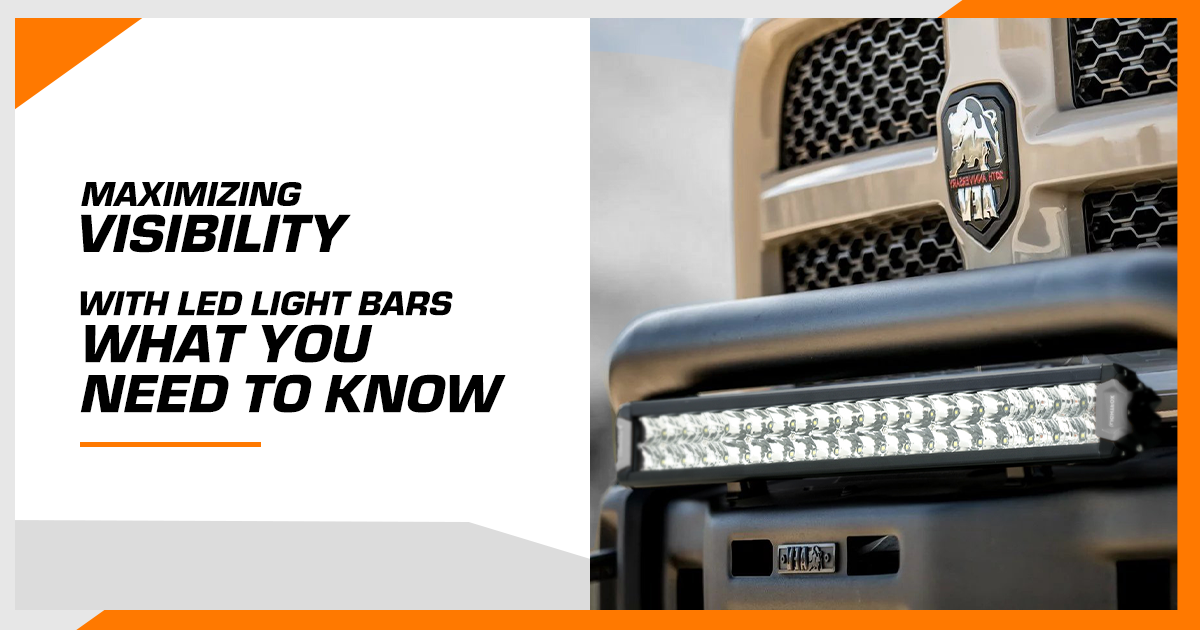Introduction:
As more and more Australians seek reliable and efficient energy storage solutions, the demand for high-quality batteries has become increasingly important. Two of the most popular types of batteries available today are LiFePO4 and AGM batteries. While both batteries have their advantages and disadvantages, it is important to understand the key differences between them to make an informed decision about which battery type best suits your needs. In this article, Vicoffroad will provide a detailed comparison of LiFePO4 and AGM batteries based on aspects such as lifespan, energy density, weight & size, DoD, maintenance, charge efficiency, ambient temperatures, price and capacity.
Lifespan
When it comes to lifespan, LiFePO4 batteries are known to last longer than AGM batteries. LiFePO4 batteries typically have a lifespan of up to 2,000 or 5,000 cycles, which translates to about 10 to 15 years of use. In contrast, AGM batteries have a lifespan of up to 300 to 700 cycles, which is equivalent to about 2 to 5 years of use. This means that LiFePO4 batteries are more durable and long-lasting than AGM batteries, making them a better investment for applications that require frequent charging and discharging.
Energy Density
Energy density refers to the amount of energy that can be stored in a battery per unit of weight or volume. In terms of energy density, LiFePO4 batteries are superior to AGM batteries. LiFePO4 batteries have an energy density of around 120 Wh/kg to 160 Wh/kg, while AGM batteries have an energy density of around 30 Wh/kg to 40 Wh/kg. This means that LiFePO4 batteries can store more energy per unit of weight or volume than AGM batteries, making them a more efficient and compact option for energy storage.
Weight & Size
In terms of weight and size, LiFePO4 batteries are much lighter and smaller than AGM batteries. LiFePO4 batteries have a specific gravity of around 1.2 to 1.3, which is significantly lower than the specific gravity of AGM batteries, which is around 1.27 to 1.3. This means that LiFePO4 batteries are much lighter and more compact than AGM batteries, making them a more practical and efficient option for applications where space and weight are a concern.
DoD (Depth of Discharge)
DoD or Depth of Discharge refers to the amount of energy that can be used from a battery before it needs to be recharged. In terms of DoD, LiFePO4 batteries are again superior to AGM batteries. LiFePO4 batteries can be discharged up to 80% without significantly reducing their lifespan, while AGM batteries can only be discharged up to 50% before they start to degrade. This means that LiFePO4 batteries offer more usable energy than AGM batteries, making them a better option for applications that require high energy density and long run times.
Maintenance
When it comes to maintenance, LiFePO4 batteries are relatively low maintenance compared to AGM batteries. AGM batteries require regular maintenance such as checking the electrolyte levels, equalizing the cells, and ensuring proper ventilation to prevent hydrogen buildup. LiFePO4 batteries, on the other hand, do not require regular maintenance and are essentially maintenance-free. This means that LiFePO4 batteries are a more convenient and hassle-free option for applications that require low maintenance.
Charge Efficiency
Charge efficiency refers to the amount of energy that can be stored in a battery compared to the amount of energy that is required to charge it. In terms of charge efficiency, LiFePO4 batteries are more efficient than AGM batteries. LiFePO4 batteries have a charge efficiency of around 95% to 99%, while AGM batteries have a charge efficiency of around 80% to 85%. This means that LiFePO4 batteries are more energy-efficient and cost-effective in the long run than AGM batteries.
Ambient Temperatures
The ambient temperature can affect the performance and lifespan of a battery. In terms of ambient temperatures, LiFePO4 batteries are more temperature tolerant than AGM batteries. LiFePO4 batteries can operate in a wider range of temperatures, from -20°C to 60°C, without significantly affecting their performance or lifespan. AGM batteries, on the other hand, have a narrower temperature range and can only operate between -10°C to 50°C. This means that LiFePO4 batteries are a better option for applications that require reliable performance in extreme temperatures.
Capacity
Capacity refers to the amount of energy that a battery can store. LiFePO4 batteries have a higher energy density than AGM batteries, which means they can store more energy in a smaller size. LiFePO4 batteries typically have a capacity of around 100-200 Ah, while AGM batteries have a capacity of around 50-100 Ah.
Price
Finally, let's talk about price. LiFePO4 batteries are generally more expensive than AGM batteries. LiFePO4 batteries can cost anywhere from 2 to 3 times more than AGM batteries. However, this price difference is justified by the longer lifespan, higher energy density, and better performance of LiFePO4 batteries. In the long run, LiFePO4 batteries can be a more cost-effective option due to their longer lifespan and higher energy efficiency.
| Model | Type | Capacity | Price |
| AP-LFP-BLK-20 | LiFePO4 | 20Ah | $149.95 |
| AP-LFP-BLK-50 | LiFePO4 | 50Ah | $339.95 |
| VABY103A | LiFePO4 | 100Ah | $599.00 |
| AP-LFP-BLK-100-MP | LiFePO4 | 100Ah | $999.95 |
| VABY104A | LiFePO4 | 150Ah | $749.00 |
| VABY107A | LiFePO4 | 200Ah | $1,099.00 |
| VABY002A | AGM | 9Ah | $29.95 |
| VABY001A | AGM | 12Ah | $38.95 |
| VABY003A | AGM | 135Ah | $249.95 |
Conclusion:
In conclusion, both LiFePO4 and AGM batteries have their advantages and disadvantages. LiFePO4 batteries are more durable, long-lasting, energy-efficient, compact, and temperature-tolerant than AGM batteries. They also require less maintenance and offer a higher depth of discharge. However, they are more expensive than AGM batteries. AGM batteries, on the other hand, are cheaper and widely available than LiFePO4 batteries. Ultimately, the choice between LiFePO4 and AGM batteries depends on your specific application and budget. If you require a battery with a long lifespan, high energy density, and low maintenance, and don't mind paying a premium price, LiFePO4 batteries are the way to go. However, if you need a more affordable battery, AGM batteries may be the economical choice.




Leave a comment
This site is protected by hCaptcha and the hCaptcha Privacy Policy and Terms of Service apply.